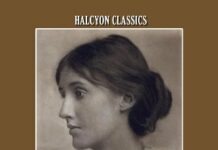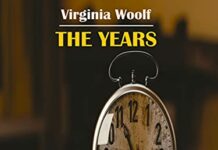
Ebook Info
- Published: 2014
- Number of pages: 226 pages
- Format: EPUB
- File Size: 0.21 MB
- Authors: Virginia Woolf
Description
The authorized, original edition of one of the great literary masterpieces of the twentieth century: A miraculous novel of family, love, war, and mortality, with a foreword from Eudora Welty. From the seemingly trivial postponement of a visit to a nearby lighthouse, Woolf constructs a remarkable, moving examination of the complex tensions and allegiances of family life and conflict between men and women.To the Lighthouse is made up of three powerfully charged visions into the life of the Ramsay family living in a summer house off the rocky coast of Scotland. There’s the serene and maternal Mrs. Ramsay, the tragic yet absurd Mr. Ramsay, their eight children, and assorted holiday guests. With the lighthouse excursion postponed, Woolf shows the small joys and quiet tragedies of everyday life that seemingly could go on forever.But as time winds its way through their lives, the Ramsays face, alone and together, the greatest of human challenges and its greatest triumph—the human capacity for change.A moving portrait in miniature of family life, To the Lighthouse also has profoundly universal implications, giving language to the silent space that separates people and the space that they transgress to reach each other.
User’s Reviews
Reviews from Amazon users which were colected at the time this book was published on the website:
⭐Each sentence in To the Lighthouse is so alive that, like toys at night in a haunted room, they wake up, change into strange things and go still again. The illusion is part due to its layering and weave – dense as poetry, light as air, not a word accidental. And part due to the structure of the novel, its great invisible solidity fixed under imagery and detail moving over it like transparent veils. Its parts are elemental: water, air, sunlight, seaweed – frilled strips pinned to the attic walls, or later trailing around Cam’s fingers in the water when the sails fill. Part of the pleasure in reading To the Lighthouse is the revelation of its interlocking structure, how the macro-structure of the novel is reflected everywhere on the micro-scale. An example: the three sections of the novel and their pace are seen again in the trajectory of the sailboat across the bay in the final section, where the wind takes it, then dies down, then moves again.The passages describing Lily Briscoe at work on her paintings seem to reflect a kind of rapture in which Woolf must have written this novel: “…with all her faculties in a trance, frozen over superficially but moving underneath with extreme speed.” “It was in that moment’s flight between the picture and her canvas that the demons set on her who often brought her to tears…” And “She was not inventing; she was only trying to smooth out something she had been given years ago folded up; something she had seen.” But some of them describe the novel itself, which has all the feel of a ghost story: “It was to be a thing you could ruffle with your breath; and a thing you could not dislodge with a team of horses.”In fact, much of the novel – like the light and dark of the lighthouse beacon, or waves crashing in and back out – works in a balanced opposition: Crowdedness and the lack of privacy juxtaposed against the condition of utter aloneness. The bond between Mr. and Mrs. Ramsay counterbalanced with their awareness of what they’ve cost one another. The collusion of the children, their secretiveness and wildness, but then their docility and vulnerability. Trapped thoughts that can’t be told, but are then understood without saying, as the same reflection – like quantum tunneling – might wind from one point of view to the mind of a different character.In part II the sound of bombs falling in the distance is described as “the measured blows of hammers on felt.” There are lines like that, which come in so lightly, but their impact on landing is powerful: the novel itself explodes in your heart like a silent H-bomb. One example is the last line in paragraph #3 in chapter XII of part 3, which I won’t give away. (And don’t sneak ahead: it won’t mean anything unless you’ve arrived there in the right order!) And this one about James, belonging as he does to the unspecified “great clan” mentioned on page one: “He was so pleased that he was not going to let anyone share a grain of his pleasure. His father had praised him. They must think that he was perfectly indifferent. But you’ve got it now, Cam thought.” Many of the details in To the Lighthouse you might not even notice on first read, but when you go back they surprise you. This is part of the secret of the novel’s geode-like quality, where you never guess what’s contained inside it until you’ve seen the whole thing and it opens for you, then you see it. Another Amazon reviewer was right in saying this: you have to read it twice.Although a short novel, To the Lighthouse contains so many themes: vision and seeing, nature at odds with human life, time and its nonlinear movement, community and individual isolation. It’s about what Mr. Ramsay knew: how “…our brightest hopes are extinguished, our frail barks founder in darkness” and what James knew: “That loneliness which for both of them was the truth about things.” It’s about things you want, and do or do not get: whether you want to go to the lighthouse, or whether you don’t want to go; whether anyone will get to Sorley, the lighthouse keeper, with tobacco and newspapers, or whether he’ll remain isolated out there; whether Lily will capture what she sees on her canvas; whether Paul Rayley will find Minta’s lost brooch. What Mrs. Ramsay wished for was the impossible. It was guessed by Lily Briscoe: “Life stand still here.”
⭐Virginia Woolf’s lovely, poignant novel based on her own family is one of the great novels of the twentieth century. Basing the novel’s central character of Mrs. Ramsay on her mother and Mr. Ramsay on her father, the well known philosopher Leslie Stephen, Virgnia Woolf strove to recreate artistically the mysteries and vagaries of time. The novel is divided unevenly into two sections, both of them dealing with possible or actual trips to the lighthouse in the vicinity of the Isle of Skye where the Ramsay family has a house that they use on summer holidays. Rarely in English fiction has the inner dynamics of a family been laid so completely bare as in this.One of the most enjoyable things about this book is the way Virginia Woolf so probingly explores the personalities of the individuals, though three stand out above all others, the aforementioned mother and father, and the unmarried amateur painter Lily Briscoe. By the end of the novel, we feel that we know all of these characters on the deepest possible level, and while the two women are sketched more lovingly, it is the father, Mr. Ramsay, who is etched in his essence. Brilliant, but with striking emotional and intellectual limitations, he is both the head of the family and its bane. It isn’t that the author dislikes him, but she is acutely aware of his vices and virtues (in her own life, Virginia’s father despaired over his wife’s early death, creating an atmosphere of gloom over Virginia’s teen-aged years). The two women are plumbed less deeply, but we come away from the novel having a sense of their worth.TO THE LIGHTHOUSE was revolutionary when it appeared as one of the first attempts to profit from many of the lessons to be taught English language fiction by the extraordinary work of Marcel Proust. Woolf had a love/hate relationship with Proust, on the one hand recognizing very early on that he was the great literary genius of the century (Joyce, on the other hand, the other titan of the century, she thought less highly of), but finding his work so brilliant as to paralyze her. She famously remarked that after reading Proust she felt incapable of writing anything. But the fact is that TO THE LIGHTHOUSE is in many ways a Proustian work. Like Proust and unlike almost no one prior in English literature (with the notable exception of Butler’s THE WAY OF ALL FLESH), Woolf fictionalized her own life (she herself appears in the novel as the girl Cam) and produced a profound analysis of the nature of passed time. Also like Proust, she attempts to break down traditional narrative and present her story impressionistically rather than historically. While she may have felt that Proust kept her from writing, the fact is that she produced the first literary masterpiece following in the footsteps of Proust.But in the end, what makes this most remarkable is the rich detailing, the marvelous nuances, the lush delineations. This is a book to be read slowly and savored, much as one would read a long poem. Indeed, this comes very close to being at times prose poetry, such as the wonderful section “Time Passes,” that is sandwiched between the first section of the novel “The Window” and the final section “The Lighthouse.”After having confessed my love of this novel, I will add that I adore this book despite being less than overwhelmed by some of her other fiction. I love Woolf’s nonfiction, but ORLANDO I sometimes regard as my least favorite work of fiction by a major writer. This novel, however, easily rates as one of my favorite twentieth century novels. I would urge anyone who has similarly found some of Woolf’s other work unpalatable to give this one a try. I would be astounded if many will find it in any way less than brilliant.
⭐This version only includes ‘Part 1 The Window’ out of a novel which has three parts. It is not a complete version and that is not mentioned anywhere by the seller as far as I know. Something like this should be mentioned on the cover page of the book, something like a quick note to say ‘Part 1’.I have had to buy the whole novel and now I just have this lying around. I would not recommend this to anyone as it is a waste of money. You onlu get Part 1 when you should be getting the whole book.
⭐It’s taken 50 years to read this book after struggling with The Waves at school. It is wonderful at capturing our minds being torn in different directions, especially women struggling between an instinct to support others and a deep desire for self expression that requires selfishness with one’s time.Woolf’s descriptive powers are breathtaking. There is a line about dawn breaking that so perfectly describes a tiny transluscence that appears inside a wave it is as if it is being observed by a mermaid.Gripping, tragic, hopeful.
⭐This was my first Virginia Woolf novel. I was expecting a Joycean stream-of-consciousness effort but in fact it was quite an easy read. Woolf’s inner-voice style may have been shockingly modern at the time, but it’s not at all difficult by the standards of today. The book does a great job of creating an atmosphere of languid, privileged, middle-class boredom, while remaining interesting for the reader with its insights into the thoughts of characters from a disappeared era. It’s a bit like wandering around a country house owned the the National Trust or English Heritage and trying to put yourself into the minds of the people who lived there.
⭐A haunting and beautiful tale, gorgeously written and engrossing. Don’t come for the plot, come for the writing, for the use of language, for the beauty.
⭐Virginia Woolf is no easy read, but this complex novel (is it really a novel?) is worth the effort. The steam of consciousness drifts about with an array of sometimes bizarre characters, and related to a numinous setting. And art and creativity and life and death. On occasions the prose is incandescent. And the lighthouse? We are all free to speculate concerning its symbolic (mystical?) significance!
Keywords
Free Download To The Lighthouse in EPUB format
To The Lighthouse EPUB Free Download
Download To The Lighthouse 2014 EPUB Free
To The Lighthouse 2014 EPUB Free Download
Download To The Lighthouse EPUB
Free Download Ebook To The Lighthouse





